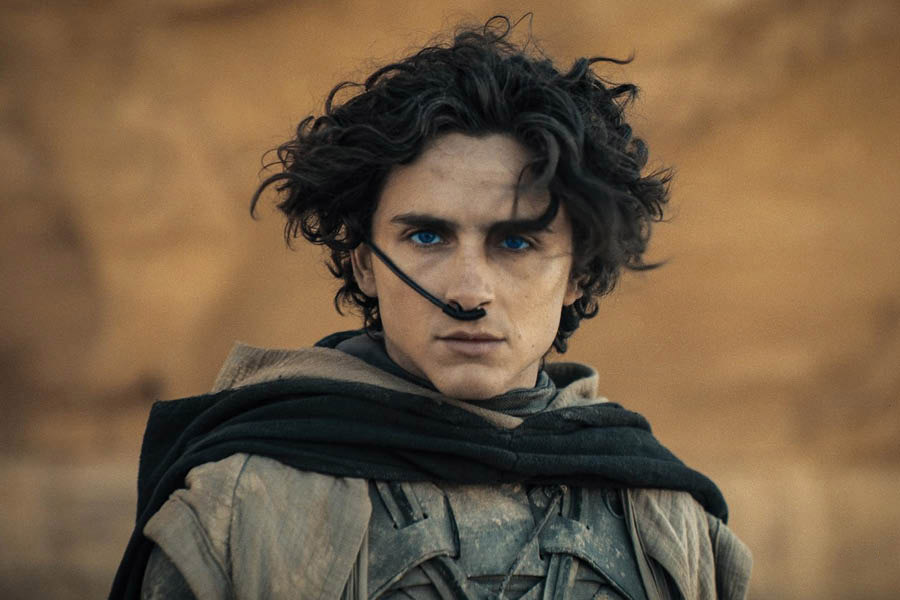Most people approach sequels with caution. Rarely does a sequel match up to the original and a sequel that is better than the original is even rarer. But if Denis Villenueve’s Dune: Part One seemed like an impossible dream come true, Dune: Part Two proves that Frank Herbert’s epic science fiction tome can no longer be called ‘unfilmable’. The second part of Paul Atreides’ story has everything that you loved in the first, only on a more massive scale. It's a cinematic extravaganza that is bigger, better, bolder and weirder.
Dune: Part Two takes off exactly from where the first movie left off, on the planet of Arrakis with Paul Atreides (Timothee Chalamet) and his mother Lady Jessica (Rebecca Fergusson) finding unlikely and uneasy allies among the native Fremens, after the House of Atreides is butchered by Baron Harkonnen (Stellan Skarsgard), with help from the Emperor (Christopher Walken). If Part One was about world building (and it is strongly recommended that you rewatch the first part before you enter the movie hall) and laying down character motivations (and it may have seemed complicated enough), Part Two delves deeper into themes of power, politics, religious fundamentalism, personal ambition, free will and fate, making it a richer and more complex tale.
At the centre of this complicated tapestry — and it is a testament to Villenueve’s skills that such a tangle of plot threads is presented in an easily comprehensible manner — is Chalamet’s Paul, who is torn between his thirst for revenge, his desire to belong and the prophecy of being the ‘chosen one’ that is thrust upon him. Chalamet is magnificent in his chameleon-like ability to shift from a nervous and unsure young man to a leader.
Equally significant in the narrative is the role played by Fergusson’s Jessica, a Bene Gesserit sister who becomes an important religious leader among the Fremen, a status she uses to manipulate Paul’s ascension as messiah, a role in which she is unsettlingly chilling. On the other side is Zendaya’s Chani, a Fremen warrior and sceptic who is unwilling to hand over the reins of the rebellion to an outsider, even after they develop romantic relations. Zendaya is solid in her much more meaty role this time around, and her chemistry with Chalamet is easy and uncomplicated.
Many of the cast from Dune: Part One find their way back to screen, from Dave Bautista as Rabban Harkonnen, who is over his head trying to control Arrakis, to Josh Brolin’s gruff gurney Halleck who finally gets his revenge, to Javier Bardem’s Stilgar who has a bigger role to play as one of the believers of the Lisan al Gaib prophecy.
Among the newcomers, Florence Pugh as Irulan, the Emperor’s daughter, gets the role of the narrator of the events unfolding but it is Austin Butler’s Feyd-Rautha, Baron Harkonnen’s psychotic nephew with his bald head and shaved eyebrows, who turns out a scenery-chewing performance, providing the perfect counterpoint to Chalamet’s Paul.
Paul’s rise to power plays out against the backdrop of the Fremeni’s war on the Harkonnens — they want to wipe the tribe out — and this sets the scene for some incredibly jaw-dropping action set pieces with the Fremen taking out the enemy sometimes by popping literally out of the ground. In these epic battles both in the first half and the extended climactic sequence, Villenueve presents a masterclass on how such action scenes are meant to be choreographed and shot. From the Fremen riding sandworms into battle to bodies thudding to the ground to massive explosions, it is a visual feast.
The way cinematographer Greg Fraser uses light and colour not just to differentiate between reality and vision but also between the Fremen — depicted in browns and blues — and the Harkonnens — so stripped of colour that it almost looks monochromatic — adds to the stunning visual spectacle that is Dune: Part Two. The score by Hans Zimmers heightens the emotional impact of every scene, whether it is Paul’s first Shai-Halud ride, Gurney finally getting his revenge on Rabban, the Fremen attacks or the Harkonnen machinations.
Yes, Dune: Part Two, like its predecessor, does deviate from the book but in a manner that not even some of the most die-hard fans can complain about. It is perhaps one of the best book-to-film adaptations to hit the screens after Peter Jackson brought The Lord of the Rings to life. In fact, while Christopher Nolan might liken it to Star Wars: The Empire Strikes Back, Dune: Part Two feels closer to The Lord of the Rings: The Two Towers, in that it builds on characters, adds new ones and lays the ground for a more conclusive third instalment, which if word is to be believed, might just be the adaptation of Herbert’s second Dune novel, Dune: Messiah.










